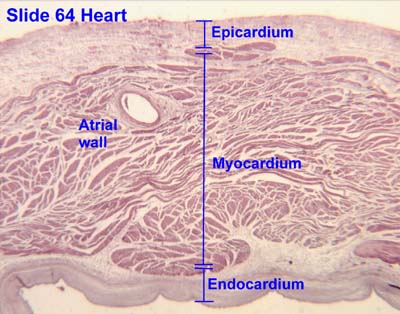Infective endocarditis. I’m willing to bet many of you have never heard of it. Many pet parents know about heart murmurs and even some heart muscle diseases like dilated cardiomyopathy (DCM). A lesser known potential cardiac problem is endocarditis or inflammation of part of the heart wall. In this week’s blog I share some insight regarding this life-threatening ailment, and I hope you find it interesting. Happy reading!
Infective Endocarditis – What is it?
The heart wall is composed of three layers – the outer epicardium, the middle myocardium, and the inner endocardium.

Inflammation of the endocardium is called endocarditis. Various microorganisms, particularly bacteria and occasionally fungal organisms, can colonize the endocardium to cause heart dysfunction and cardiovascular compromise. Common infectious organisms implicated in infective endocarditis include:
- Staphylococcus aureus
- Streptococcus spp.
- Pasteurella spp.
- Pseudomonas spp.
- Escherichia coli
- Corynebacterium spp.
- Erysipelothrix rhusiopathiae
- Actinomyces turincensis
- Bartonella spp.
Transient bacteria in the blood is relatively common. Yet endocarditis is not common because most patients have immune systems strong enough to remove bacteria from bloodstream. Patients with a damaged endocardium are at risk for infective endocarditis since bacteria are able to stick to the damaged surface. The left side of heart is almost exclusively affected. In addition to the marked heart dysfunction, there are also potential systemic consequences of infective endocarditis, particularly abnormal clot formation and the deposition of immune complexes in the kidneys, joints, and other muscles.
Infective Endocarditis – What does it look like?
Patients with infective endocarditis are typically middle aged (4-8 years of age), and male dogs are more commonly affected. Some breeds are more commonly affected, including:
- German shepherds
- Golden retrievers
- Labrador retrievers
- Doberman pinschers
- Newfoundlands
- Rottweilers

Pet parents may observe a wide variety of clinical signs in their fur baby, particularly:
- Lethargy & depression
- Weakness
- Shaking or shivering
- Elevated respiratory rate
- Coughing
- Lameness
- Abdominal discomfort
- Reduced (or loss of) appetite
- Vomiting
- Diarrhea
- Altered mentation
- Seizures
Multiple health conditions increase a patient’s risk for developing endocarditis such recent oral or urinary tract infection, infected wounds, recent dental procedure, kidney infection, and pneumonia. Pets with compromised immune systems are also more susceptible. Dogs and cats with a heart condition called subaortic stenosis and those in whom a pacemaker has been placed are also predisposed to infective endocarditis.
Infective Endocarditis – How is it diagnosed?
Your family veterinarian will obtain a thorough patient history and it is exceedingly important you answer all questions as completely as possible. After interviewing you about your pet’s health, the doctor will perform a complete physical examination. Proverbial red flags found on physical examination include:
- A new heart murmur in a patient with a fever
- Elevated heart rate
- Abnormal heart rhythms
- Cold limbs and paws
- Discomfort
- Unequal, weak, or absent pulses in the pelvic limbs
- Altered mentation, seizures
- Lameness
Your family veterinarian will likely recommend evaluation by a board-certified veterinary cardiologist to develop an appropriate diagnostic plan. Definitive diagnosis of infective endocarditis requires a combination of blood tests and diagnostic imaging. A blood culture is performed to identify the infective organism(s). Furthermore, a board-certified veterinary cardiologist will perform an ultrasonographic examination of the heart (called an echocardiogram) to identify specific changes to various heart structures.

Infective Endocarditis – How is it treated?
Major goals of therapy are:
- Eradicate the infective organism
- Effectively manage secondary complications
Affected patients will receive an antibiotic(s) based on the blood culture results. Congestive heart failure is the most common complication of infective endocarditis. Accordingly, patients will require medications to restore and maintain proper heart function. Treatment of infective endocarditis can be quite challenging, and many patients require aggressive in-hospital care. Your family veterinarian and/or pet’s cardiologist may recommend partnering with a board-certified veterinary specialist in emergency and critical care to develop an effective treatment plan. The overall prognosis for patients with infective endocarditis is guarded with a survival rate of ~20%. Treatment success depends on early diagnosis and aggressive management.
The take-away message about endocarditis in dogs and cats…
Infective endocarditis is an uncommon infection of the heart wall. Affected patients frequently develop severe clinical signs, including congestive heart failure. Prompt diagnosis and interventions are of paramount importance, and partnering with board-certified veterinary cardiologists and emergency and critical care specialists helps maximize the likelihood of a positive outcome.
To find a board-certified veterinary cardiologist, please visit the American College of Veterinary Internal Medicine.
To find a board-certified veterinary emergency and critical care specialist, please visit the American College of Veterinary Emergency and Critical Care.
Wishing you wet-nosed kisses,
cgb




